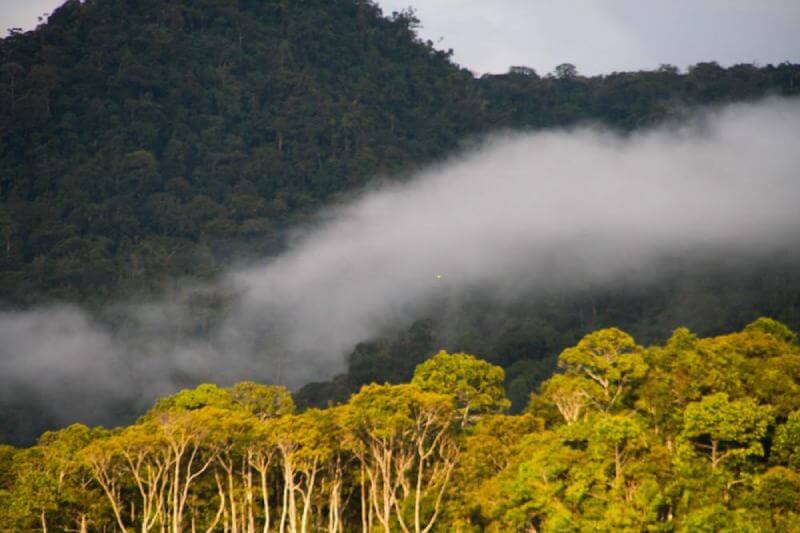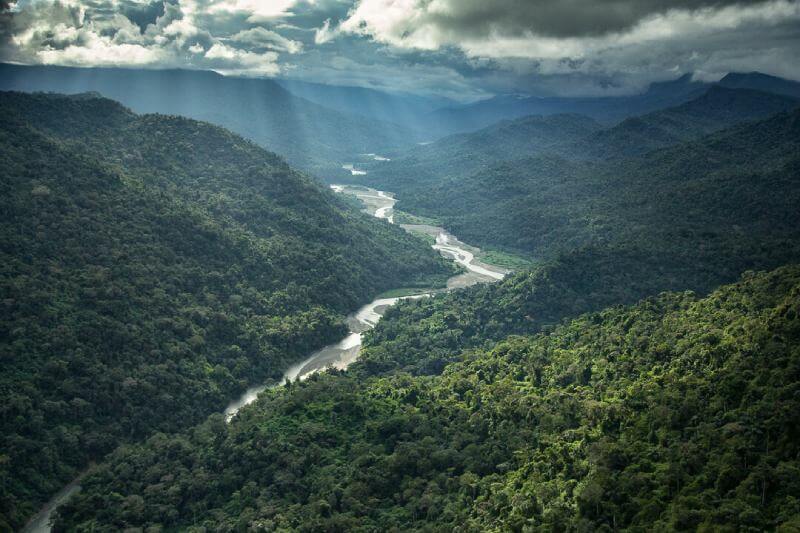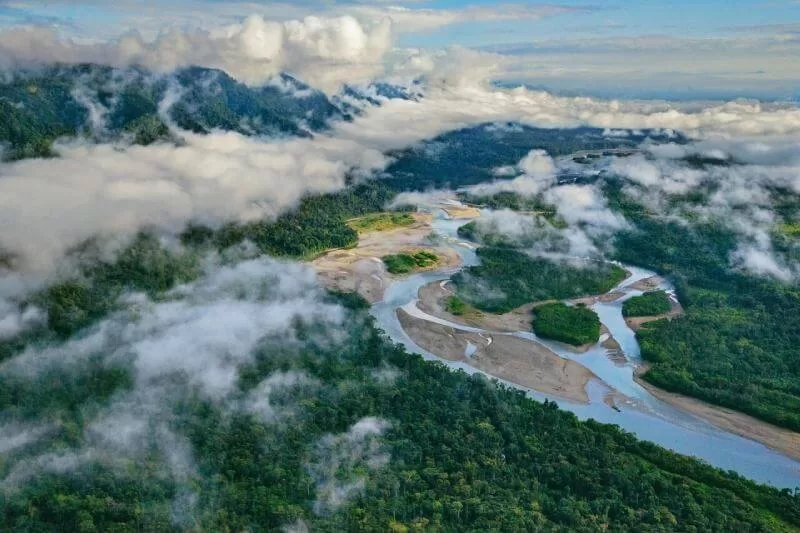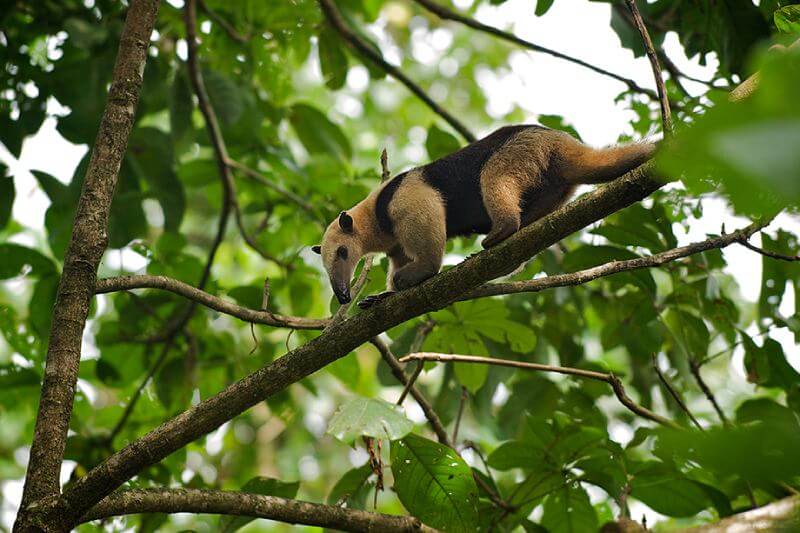Don’t doubt it! Visit Manu Park! We’ll help you plan for the best season. Each time of year offers unique experiences.
Dry season, from May to October, promises clear skies and easier wildlife spotting. It’s ideal for hiking and birdwatching. Prepare for cooler nights and busy trails.
The wet season, spanning November to April, transforms the park into a lush, vibrant paradise. Waterways become gateways to remote areas. However, expect heavier rainfall and fewer tourists.
Understanding these seasonal dynamics enhances your adventure. Our guide helps you choose the best time for your visit. Let’s embark on a journey through Manu Park‘s natural calendar.

Nestled in the heart of Peru, Manu National Park beckons with its unparalleled biodiversity and stunning landscapes. This site is a haven for nature enthusiasts and adventurers alike.
The dry season, spanning from May to October, offers the perfect backdrop to explore this ecological treasure. Let’s delve into why a visit to Manu Park during these months is an unforgettable journey.
During the dry season, lower water levels make it easier to navigate. Animals flock to rivers and watering holes, providing exceptional wildlife viewing opportunities. Here, you’ll find a myriad of bird species, from the strikingly colorful macaws to the elusive harpy eagles. Mammals like the spectacled bear and the giant otter become more visible, offering thrilling encounters.
The dry season’s weather conditions are ideal for trekking. Trails dry up, and the risk of slipping decreases significantly. Hikers can reach remote corners of the park, uncovering hidden waterfalls and ancient trees.
Each step reveals the park’s intricate ecosystem, where every plant and creature plays a pivotal role. Remember, the right gear will enhance your hiking experience.
Clear skies dominate the dry season, allowing for spectacular sunrises and sunsets. The lack of clouds at night unveils a mesmerizing display of stars.
Camping under such a starlit canopy is magical. It connects you deeply with nature. Ensure to book a spot in advance to secure your place under the stars.
Visiting Manu Park also opens doors to understanding the local indigenous communities. Dry season means more village activities and opportunities to interact. You’ll gain insights into their sustainable lifestyles and rich cultural heritage. Such encounters enrich your travel experience, offering perspectives beyond the natural world.
For photographers, the dry season is a dream. The vibrant landscapes and abundant wildlife create a perfect canvas. The golden hours of sunrise and sunset bathe the forest in a soft, enchanting light.
It’s a time when even amateurs can capture professional-grade photographs. Always respect wildlife and the natural environment while shooting.
While the dry season reduces the likelihood of rain, it’s wise to come prepared. Light, breathable clothing will keep you comfortable during the day. Cool evenings call for a warmer layer. Mosquito repellent and sun protection are must-haves.
Manu Park’s dry season is a fleeting marvel. It offers a unique window to explore the park’s wonders with ease. The landscapes transform, wildlife thrives, and the skies clear up, presenting nature in its full glory. A visit to Manu Park now is not just a journey; it’s a deep dive into the heart of biodiversity.

Manu Park, a jewel in the Peruvian Amazon, transforms during the wet season. This time brings life, color, and vibrancy to an already fascinating ecosystem. A trip to Manu during these months offers a unique glimpse into the Amazon Basin.
The wet season, from November to April, cloaks the park in a misty veil. Rain nourishes the flora, making the park’s landscapes burst with greenery. The sound of raindrops creates a soothing symphony, enhancing the sense of adventure. This period is a spectacular time to visit Manu Park, as the entire ecosystem awakens.
The swollen Manu and Madre de Dios rivers become the main arteries of exploration. Boat rides offer unparalleled access to the park’s remote corners. Gliding through giant rivers amidst the rain is not just travel; it’s an adventure. The boat becomes your window to the Amazon’s soul, revealing secrets at every bend.
Ascending into the cloud forest reveals a world suspended in mist. This unique ecosystem, part of the Andean grasslands, is home to an astonishing variety of birds. Here, birdwatchers can feast their eyes on species not found anywhere else. The cloud forest also serves as a gateway to the high Andean region, adding layers to your journey.
The wet season triggers a surge in wildlife activity. The lush landscapes provide a haven for the park’s diverse inhabitants. From the tiniest insects to the majestic jaguars, life thrives.
The flora, too, takes on a life of its own, with orchids and bromeliads flowering in profusion. Every turn in the park is a lesson in the delicate balance of nature.
A visit to Manu Park’s cultural zone connects you with the indigenous peoples. Their knowledge and relationship with the land are profound. Engaging with these communities offers insights into sustainable living and ancient traditions. It’s a part of the Manu experience that touches the soul, making any trip to Manu deeply meaningful.
The Manu Reserve Zone, accessible during the wet season, is a haven of biodiversity. It’s here that Manu’s untouched beauty reveals itself. The limited access preserves the sanctity of this wilderness. A guided tour to Manu’s reserved zone is highly recommended, offering an immersive experience into the park’s heart.
Even a day tour in Manu National Park can be rich in experiences. Jungle tours, guided walks, and cultural visits fill the day with discovery. Each activity is a thread in the fabric of Manu’s story, woven together to create a tapestry of memories.
The Amazon Basin, within which Manu lies, is a testament to nature’s abundance. Its rivers, forests, and wildlife are part of an intricate web. A visit to Manu Park is a dive into this vast, life-sustaining system. It’s a reminder of the world’s natural wonders, urging us to preserve them.
A visit to Manu Park during the wet season is a journey like no other. It offers a different perspective of the Amazon, one where life bursts from every nook. The rain adds a layer of adventure, making every discovery a treasure. Now is the time to explore this vibrant, living ecosystem.

Embarking on a trip to Manu Park promises an adventure of a lifetime. Nestled in the heart of the Amazon Basin, this natural wonder is a mosaic of biodiversity and cultural richness. To ensure your visit to Manu Park is unforgettable, we’ve compiled essential tips and tricks.
Timing is crucial for an optimal experience. The dry and wet seasons offer different perspectives of the park. Consider what you want to see and do.
For wildlife sightings and hiking, the dry season is ideal. For lush landscapes and boat rides, choose the wet season. Each visit to Manu Park offers unique encounters.
Manu Park is vast, comprising several zones with varying access levels. The reserved zone, cloud forest, and cultural zone each offer distinct experiences. Decide early which areas you wish to explore. A tour to Manu often includes visits to multiple zones, maximizing your adventure.
A guided tour to Manu is highly recommended. Choose operators with a strong environmental and ethical record. They ensure safe and respectful travel within the park. Plus, their expertise enriches your journey, offering insights into the flora, fauna, and indigenous cultures.
The Amazon’s unpredictable weather demands smart packing. Include lightweight, breathable clothing for the day. Bring layers for cooler evenings and rain gear.
Don’t forget insect repellent, sunscreen, and a good hat. Your gear can make or break your experience in Manu National Park.
Vaccinations are mandatory for travel to the Amazon. Consult with a travel health clinic well in advance. Also, stay hydrated and use insect repellent to avoid diseases carried by mosquitoes.
Respecting the indigenous peoples and the natural environment is crucial. Follow your guide’s advice on interacting with local communities. Practice leave-no-trace principles to preserve the park’s beauty for future visitors. Responsible travel ensures the protection of Manu Park’s invaluable resources.
The Manu and Madre de Dios rivers are lifelines of the park. A boat ride offers breathtaking views of the rainforest and wildlife. It’s a must-do activity. The rivers’ giant meanders reveal the heart of the Amazon, making for an unforgettable experience.
Manu Park is a haven for biodiversity. Over 1,000 species of birds, hundreds of mammals, and countless plants call it home. Take slow walks, listen, and observe. The park’s immense biodiversity is a highlight of any trip to Manu.
The journey to Manu often starts in the high Andean grasslands. This unique ecosystem offers stunning landscapes and wildlife. It’s a stark contrast to the rainforest and enriches your adventure.
The cultural zone of Manu Park provides an opportunity to interact with native communities. These interactions are enlightening, offering a glimpse into a way of life in harmony with nature. Remember to approach these experiences with respect and openness.

If you got any questions, please do not hesitate to send us a message. We reply within 24 hours!
+51 900 394 399
info@biomanuexpeditions.com
reservas@biomanuexpeditions.com
